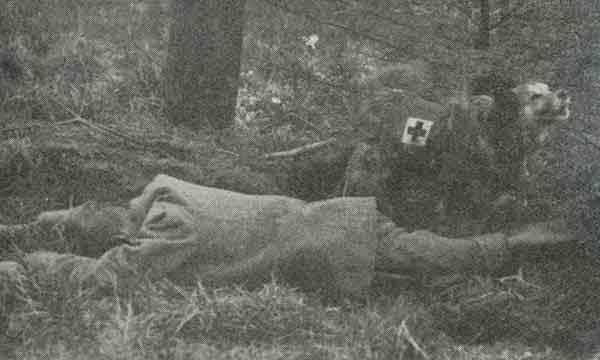

Man’s best friend has also been man’s battle buddy for as long as dogs have been domesticated. The mechanical, industrialized slaughter in the trenches of World War I didn’t change that one bit. All the belligerents let slip the dogs of war, some 30,000 in all. Mercy dogs were used to hunt rats, guard posts as sentries, scout ahead and even comfort the dying.
The last were the mercy dogs of the Great War.
Our canine companions can do much more than just fight alongside us in times of war. Modern-day uses of dogs include bomb-sniffing and locating the bodies of the fallen. World War I saw some uses of dogs unique to that war, especially in terms of hunting the rats that spread disease and ate corpses in the trenches. Dogs were used in scouting parties; their unique senses, especially smell, allowed them to detect the presence of enemy troops long before their human counterparts. When on guard duty, sentry dogs alerted their handlers to even the most silent of a human presence. But the dogs of mercy were truly the most unique among them.
Mercy dogs, also called casualty dogs, were first trained by the Germanic armies of the 19th Century, but their popularity only grew. The sanitatshunde were trained to find the wounded and dying anywhere on the battlefield. Sometimes they carried medical supplies to help the wounded care for themselves until they could find care from a doctor or medic. If the soldier was too far gone for medical care, the dog would stay with him as he died, to ensure he wasn’t alone.

The most common kind of dog on the battlefields were German Shepherds and Doberman Pinschers, both of German origin. This was mostly due to their intelligence, endurance, and ability to be trained for even the most dangerous tasks. For the mercy dog, the most popular and able breed was the Boxer. Boxers are not only able to do what other breeds could but they were also fiercely loyal and on top of comforting the wounded and dying, they would also guard and defend them until the end.
If a mercy dog on the battlefield found a wounded man, it would return to friendly lines with its own leash in its mouth, indicating that one of their own was out there and in need of help. Most importantly, the dogs were able to distinguish between a dead and unconscious man. If he was dead, the dog would move on. If he were dying, the dog would stay with him.
Thousands of wounded troops owed their lives to these dogs.
